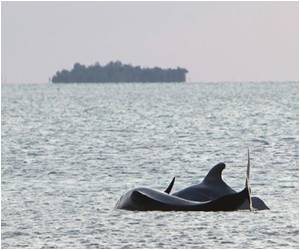
After taking samples of water at a depth of 16 feet, Proskurowski, researcher at the University of Washington, discovered that wind was pushing the lightweight plastic particles below the surface.
That meant that decades of research into how much plastic litters the ocean, conducted by skimming only the surface, may in some cases vastly underestimate the true quantity of plastic debris in the oceans, Proskurowski was quoted as saying in the journal Geophysical Research Letters.
Plastic waste in the oceans is a concern because of the impact it might have on the environment. For instance, when fish ingest the plastics, it may degrade their liver functions, said a university statement.
Besides, the plastic particles make nice homes for bacteria and algae, which are then transported along with the particles into different regions of the ocean where they may be invasive and cause problems.
Proskurowski and study co-author Tobias Kukulka, University of Delaware, said that data collected from just the surface of the water commonly underestimates the total amount of plastic in the water by an average factor of 2.5. In high winds, the volume of plastic could be underestimated by a factor of 27.
Advertisement
By combining the data with wind measurements, Proskurowski and his co-authors developed a simplified math model that could potentially be used to match historical weather data, collected by satellite, with previous surface sampling to more accurately estimate the amount of plastic in the oceans.
Advertisement
Source-IANS









